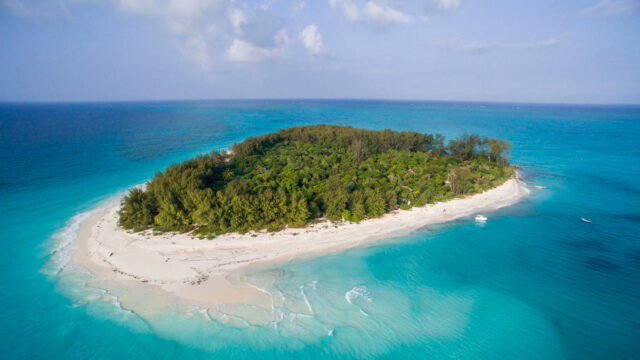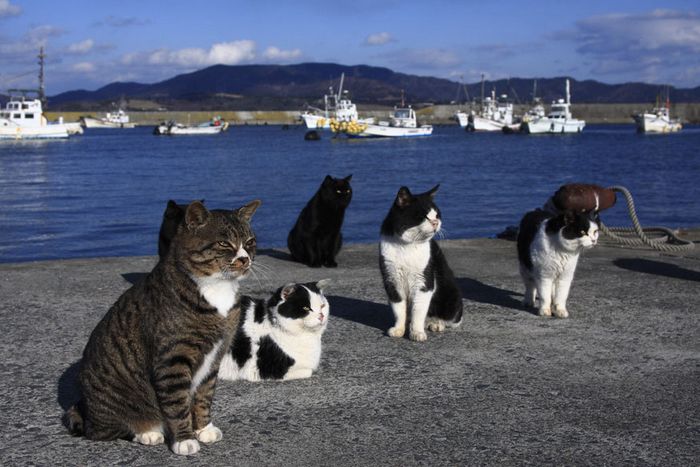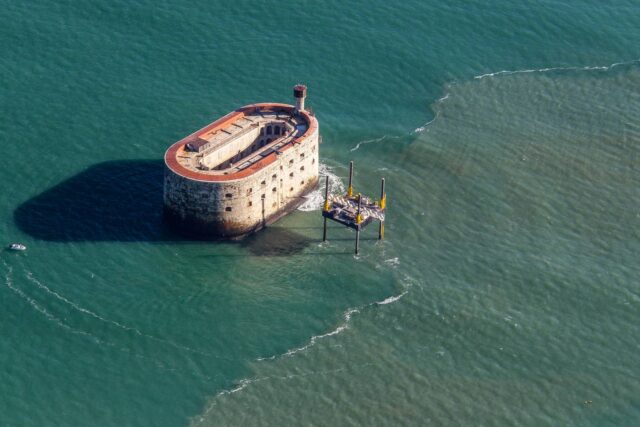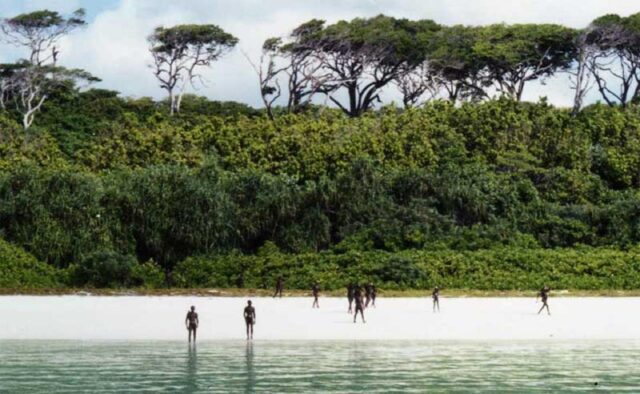
For most of us, islands hold a certain mystique. It could be their seclusion that entices us or the perceived difficulty of reaching them. Others are relatively untouched and represent a world lost in the modern age. For these reasons and many more, islands can be deeply fascinating. Here are some of the most unique examples.
5Tashirojima

Just off the east coast of Japan, Tashirojima is an island with a small population (less than one-hundred people) comprised mostly of the elderly.
The island’s villages aren’t expected to survive much longer (Japan designates such places as “terminal villages”), which is a real shame because that means no one will be around to feed all those cats. Tashirojima has a huge stray cat population, earning it the nickname “Cat Island.”
A local belief that feeding and breeding cats will bring good luck has led to the stray feline population dwarfing the human population. It’s gone so far that dogs are banned from the island. In the island’s past cats were raised to keep the mouse population down.
Fishermen who came to the island would feed the cats. Overtime the fishermen would interpret the cats’ behavior to predict the success or potential dangers on their next job. Overtime several monuments and shrines were built, one of which is at the heart of the island.
4Okunoshima

Any discussion of Cat Island would be incomplete without mention of Okunoshima, also known as Usagi Shima (“Rabbit Island”). A small island off the south-west coast of Japan, it’s a popular tourist attraction due to the hundreds of feral rabbits that call it home. The rabbits are friendly and approach visitors without hesitation.
The rabbits are also protected by law and hunting them is prohibited. The explanation of how the rabbits came to the island requires one to delve into Okunoshima’s dark past. In 1925 the island was chosen as a top-secret location by the Japanese military to develop chemical weapons. At the end of World War II the program ended and the plant was destroyed.
In the following years, the island was converted into a park, and to this end, rabbits were released. A common but mistaken belief is that the rabbits are descendants of those used for testing at the chemical weapons facility. According to curators at the Poison Gas Museum (also on the island), that isn’t the case.
3Island of the Dolls

One of several chinampas (artificial islands) in the canals of Xochimilco boroughs, this subject isn’t an island in the usual sense. Chinampas were made in bodies of water as a means to increase agricultural output.
The Island of the Dolls, however, makes only nightmares. The history of the island is a bit cloudy. According to Julian Santana Barrera, a man who lived on the island alone, he found a young girl drowned in a canal. Moments later he found her doll in the water, too.
He hung the doll from a tree, either in memorial or to appease her spirit. This continued as he found more dolls (and doll parts), placing them throughout the island. Supposedly he felt that the dolls were possessed by the spirits of other girls.
Julian died in 2001, though, and verifying these things has become difficult, particularly the truth of finding a drowned girl (no other sources seem to confirm this) There’s a good chance the story has been embellished by outside sources, but again, we may never know.
After his death, the island has become a popular destination in Mexico. People report hearing the dolls whisper or finding that they’ve moved from place to place. Some tourists even bring their own dolls to contribute to Julian’s strange legacy.
A man-made island of a different sort, Fort Boyard is a fortification built off the west coast of France. Its story is a bit of a funny one. In 1661 Louis XIV wanted to build the fort to compliment two others; by building Fort Boyard roughly halfway between the other two, all three forts could better serve as defensive outposts by increasing artillery range.
The plan was put into motion but abandoned in 1667 due to massive cost and logistics. One of Louis XIV’s engineers described the project like this: “It would be easier to seize the moon with your teeth than to attempt such an undertaking in such a place.” The plan was resumed in 1757 but faced similar difficulties and was dropped once again.
Napoleon Bonaparte put major efforts into completing construction in 1800. By the time the plan was abandoned again in 1809, a plateau and foundation had been created. The project was resumed for a final time in 1837 by Louis-Philippe and finished in 1857.
But by this time Fort Boyard was obsolete as the range of artillery weapons had greatly increased. Originally built to service a garrison of 250 soldiers, Fort Boyard was briefly used as a military prison. It was later used as a filming location for the 1967 film The Last Adventure. More recently it’s been the filming location for the game show Fort Boyard.
One of the Andaman Islands in India’s Bay of Bengal, North Sentinel Island is home to the Sentinelese, a group of people living in voluntary isolation, repelling and occasionally killing outsiders who come to the island. Records of the island and its people date back to 1771.
Prior to that, some explorers claimed that the Andaman Islands were home to cannibal tribes, thus sailors did their best to avoid them. Because of this, we don’t have much of a history of the island itself or the Sentinelese. Those who attempt contact with the tribe (or have the misfortune of getting their shipwrecked on the island’s surrounding reefs) are usually attacked if discovered.
Though many attempts have been made by different groups to establish a relationship and study the Sentinelese, none have succeeded and we know next to nothing about the culture. We do know that they are a hunter-gatherer society, they use limited metalworking, and they build small canoes for fishing but not general seafaring.
For a period of time between the 60s and 90s, the Indian government made regular trips to the island in order to leave gifts on the shore (such as food not found on the island, like coconuts, or simple tools) in the hopes of getting the Sentinels to become less hostile. By the time the program was canceled little headway was made.
Attempts to survey the island and the Sentinelese are thwarted by the island’s geography. A dense jungle canopy covers nearly all of North Sentinel Island. Aerial views and even satellite imaging reveal very little. The population is estimated to be less than four-hundred people.









